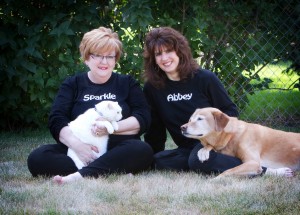
So You Want to Write a Book – Part 4 Ready for Take Off!
“If there’s a book that you want to read, but it hasn’t been written yet, then you must write it.”
~ Toni Morrison
Welcome back to So You Want to Write a Book!
Remember that notebook? It’s time to pull it out and review our progress. We’ve spent the past few months talking about prep work: defining the type of book, getting to know your genre, and creative brainstorming about your books. Now, it’s time to start moving forward with the actual writing.
We like to think about writing a book as a journey and step four is where you take off into the unknown. Sound scary? It’s not really. Your bags (okay, actually your notebook and your brain) are packed with all kinds of helpful information and you are ready!
But before you take off it’s important to know how you’re going to travel. Have you heard of plotters and pantsers? How about plansters? Basically, most writers fall into one of these three categories. There are the pantsers who write “by the seat of their pants” and plan very little. Then there are the plotters who plan their book before they write it. And finally, there are the plansters who are a combination of the other two and do a little of both. So which are you? It’s simple to determine. Consider the three options and determine your comfort level with each and bingo! That’s you. (At least for this project anyway. The more you write the more you’ll begin forming your own individual writing style.)
Pantsers
If you’re a pantser, this is it. Go! Get writing. You may have to occasionally pull out that notebook to remind you of where you’re going but just keep moving forward. Write, write, write.
Plotters
Plotters, you’ve got a little more prep before you take off. There are several plotting methods, and we won’t detail them all but here’s our top 7. Find the one that you think will work for you and try it out. Make adjustments to the method as you like. This step is simply getting down the story route from beginning to end.
- Synopsis Approach – An overview of the story from beginning to end with the hook, inciting incident, plot points, and resolution.
- Detailed Outline – Used to create an outline of major plot points, summary of each chapter, and a detailed scene list.
- Snowflake Method – Developed by author and physicist, Randy Ingermanson, where you start small, then build your story.
- Story Grid – Created by editor Shawn Coyne using problem-solving methodology and most useful on 2nd drafts but can be used for an initial work plan.
- Three-Act Structure – Tried and true this method can be more or less detailed depending on your writing style and it works great for most genre fiction.
- The Hero’s Journey or Heroine’s Journey – In his book, The Hero with a Thousand Faces, Joseph Campbell broke down the 17 steps of the hero’s journey. We’ve also recently read Gail Carriger’s The Heroine’s Journey and would recommend taking a look at it.
- Writing from the Middle or sometimes referred to as In Medias Res – James Scott Bell, an award winning and best-selling author explains it well in his book, Write Your Novel from the Middle.
Plansters
If you’re a combination of the two, meaning you like to plan a little and then write forward. There may be some of our favorite methods that seemed appealing to you. Try them out, use what works, and maybe even do a mash-up of the parts that inspire you.
Non-Fiction
If you’re writing non-fiction, we didn’t forget about you! Here are a couple of methods that you might find helpful.
- Mind mapping Author Rick Lauber shares outlining tips on the Writer’s Digest website.
- Scribe Book Outline walks you through the same process they use with their authors on how to outline a book.
The main thing is – it’s time to get moving!
Next month, we’ll talk about bumps in the road and how to deal with them. Until then, happy writing!

Sparkle Abbey is actually two people, Mary Lee Ashford and Anita Carter, who write the national best-selling Pampered Pets cozy mystery series. They are friends as well as neighbors so they often get together and plot ways to commit murder. (But don’t tell the other neighbors.)
They love to hear from readers and can be found on Facebook, Twitter, and Pinterest, their favorite social media sites. Also, if you want to make sure you get updates, sign up for their newsletter via the SparkleAbbey.com website

Good info here. Before I start, I usually know where the story begins and ends. So I write, write, write. When I come to a stop, I make a synopsis of each written chapter. I suppose you could say it’s outlining after the fact.
Mary Lee, so well done. Perhaps you should gather these posts and make a how to book? Just the peanut gallery weighing in.